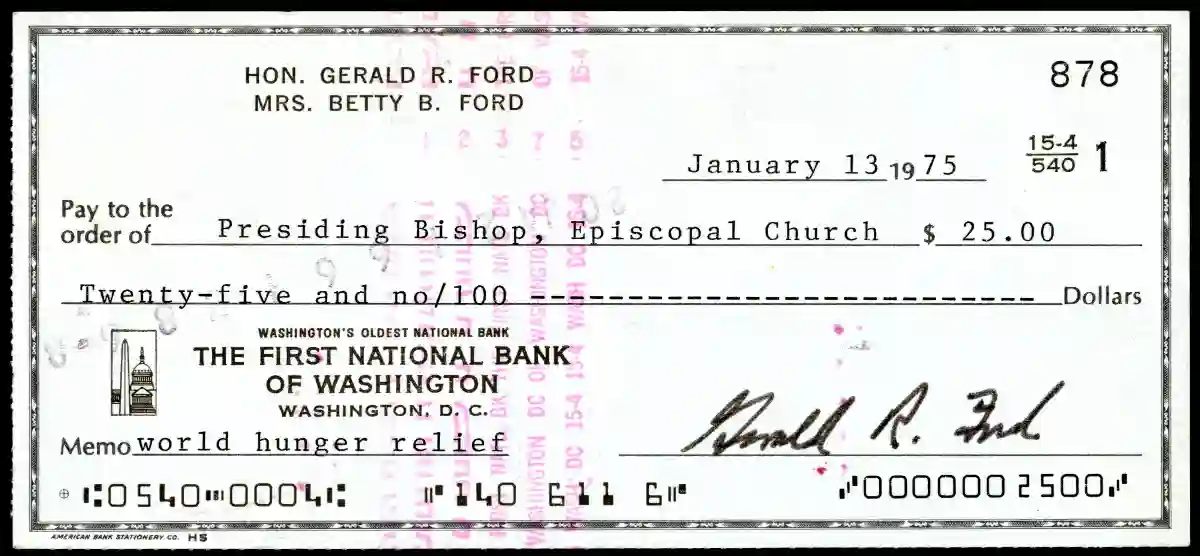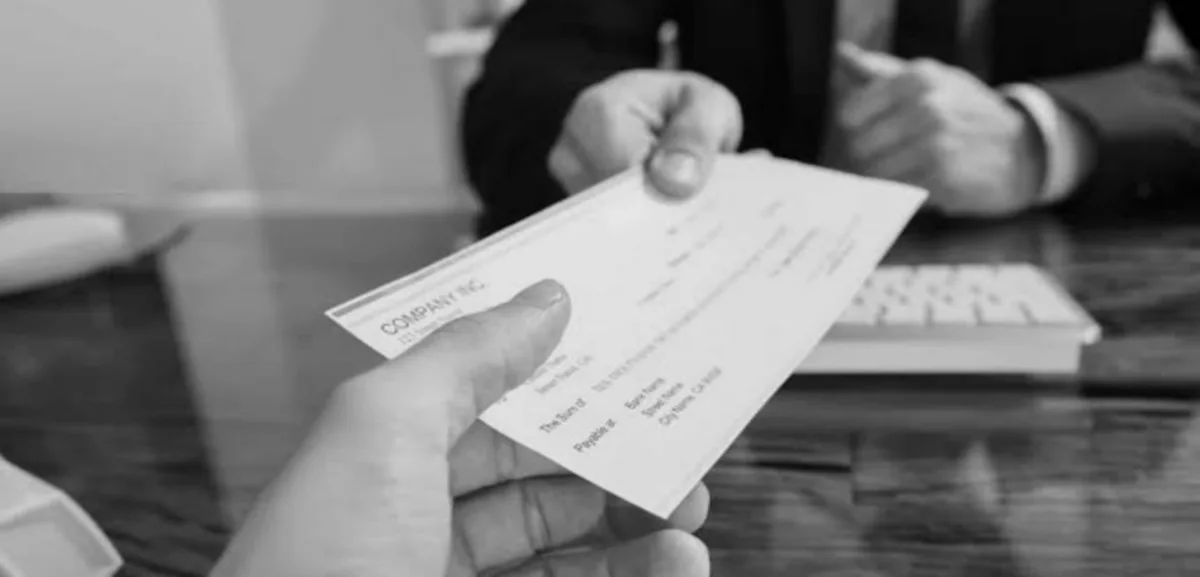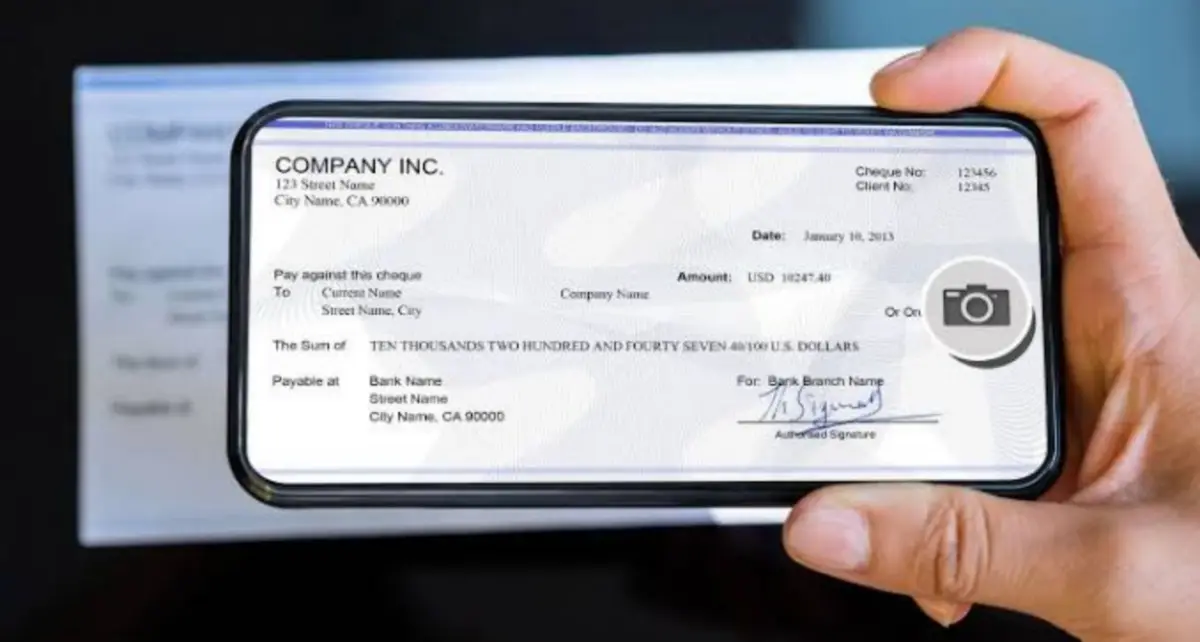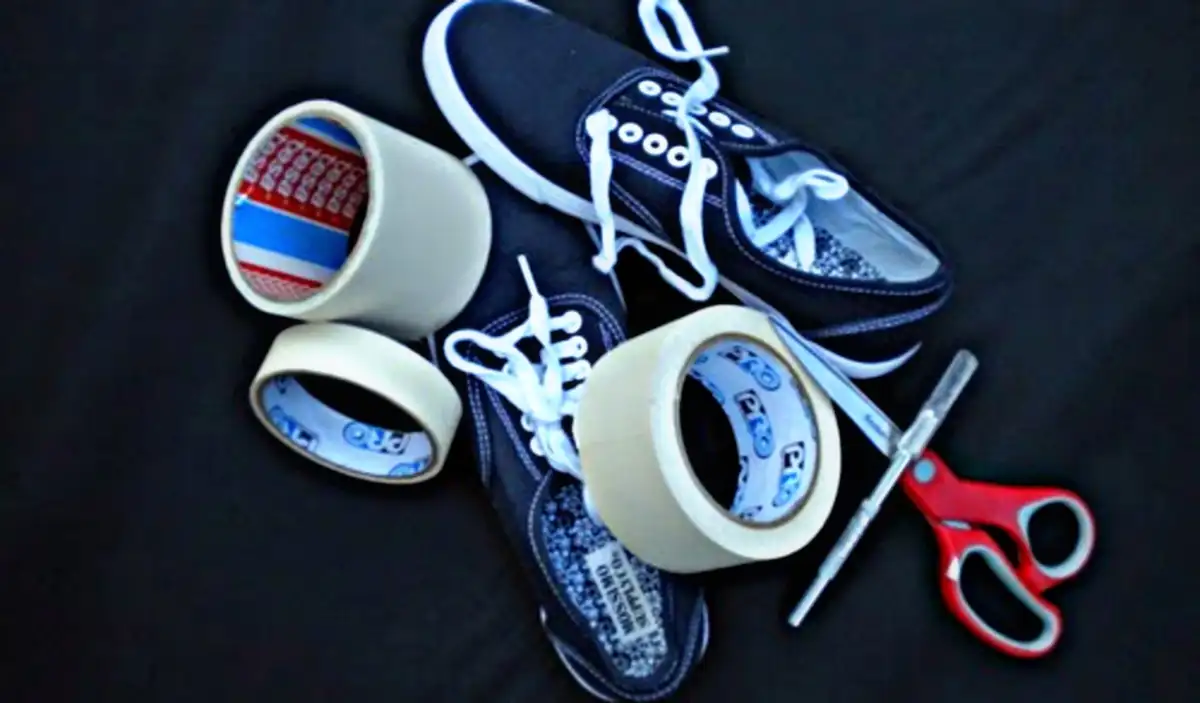Have you ever heard of instances where people make fake checks and cash them? Well, this unfortunate incident does take place. Generally, it involves someone making a check that looks real but isn’t, and then they try to cash it to get money they don’t actually have. It’s a sneaky trick that can fool people and even banks sometimes. In this article, we’re going to explain how these fake checks are made, how people cash them, and most importantly, how you can stay safe.
How to Make Fake Checks and Cash Them

1. Use Legitimate Checks as a Template
Someone can use legitimate checks as templates for creating fake ones. They may acquire these checks through theft or deceit, such as intercepting mail or purchasing canceled checks online.
Once obtained, they can use high-resolution scanners and advanced photo editing software to replicate the check’s details, including account numbers, logos, and signatures. The process involves meticulous attention to the paper quality, ink, and printing methods used by legitimate banks.
These counterfeit checks are then printed on specialized paper that mimics the appearance and feel of real checks. This method relies on the authentic design of the original check to deceive both individuals and banks, making it a prevalent approach in check fraud.
2. Use Advanced Printers and Scanners
With the advancement in printing and scanning technology, it is more accessible for people to make fake checks and cash them. High-quality printers capable of using magnetic ink allow for the reproduction of the specific fonts and symbols found on legitimate checks.
Scanners equipped with advanced imaging capabilities enable the capturing of fine details, such as security threads and watermarks.
Additionally, the paper used to print fake checks can be sourced to match that used by banks, containing similar weight and texture. These tools can be used alongside graphic design software, counterfeiters can create fake checks that closely resemble genuine ones. In some cases, this technique underscores the importance of careful examination and verification of checks, especially those from unfamiliar sources.
3. Manipulate Real Checks (Check Washing)
Check washing is a specific form of fraud where existing information on a legitimate check is altered. This is typically accomplished using chemicals or solvents that erase the ink without damaging the paper.
Once the original details, such as the payee’s name or the amount, are removed, the fraudster can write new information on the check. Advanced methods may even include reprinting the altered details using fonts and ink that match the original. Since the check itself is genuine, and only certain aspects have been changed, this form of fraud can be especially challenging to detect.
4. Create Fake Financial Institutions
In more sophisticated schemes, someone may create entirely fake financial institutions, complete with authentic-looking logos, addresses, and even websites. These fake institutions may appear very real to an unsuspecting victim. The person can then generate fraudulent checks that bear the fake bank’s name, using invented or repurposed routing numbers that might not immediately raise red flags.
Using this method to make fake checks and cash them requires extensive planning and execution, as it involves creating a believable facade for the fake institution. It also includes official documentation and even customer service contacts. By the time the check is revealed to be fake, the person may have already succeeded in withdrawing the funds.
5. Use Online Tools and Services
The internet has unfortunately made the process of creating fake checks and cashing them a lot easier in some instances.
A person can purchase check templates or utilize online design tools to produce counterfeit checks. These online platforms may offer customization features that allow the user to input fraudulent information seamlessly.
Some websites might even provide guidance or tutorials on creating realistic-looking checks, including how to mimic security features found on legitimate checks. This accessibility makes it even more essential for individuals and businesses to be vigilant and educated about the potential risks and to take proper precautions when accepting checks, particularly from unknown sources.
6. Co-opt Insider Assistance
Although rare, there are instances where criminals may recruit or coerce insiders, such as bank employees, to assist in the production of counterfeit checks. These insiders might have access to secure materials, tools, or information that can make the fraudulent checks more convincing.
They may also help bypass certain security measures within the banking system. This form of collusion can make detection and prevention more difficult, as it exploits trust within the banking system itself. However, such insiders do get caught – probably not all the time. For instance, a former Goldman Sachs investment banker was convicted in massive bribery and money laundering scheme.
7. Exploit Outdated Security Features
Some counterfeiters focus on replicating or circumventing the security features present in checks. This can include mimicking watermarks, security threads, or other anti-counterfeit measures. In some cases, fraudsters may target checks with outdated or well-known security features, as these can be easier to replicate. They may also use technology to analyze and reproduce these features in the counterfeits.
8. Prey on Individual Victims
Personal check fraud involves creating fake checks that appear to be from an individual’s personal checking account. This often requires the criminal to have access to personal information, such as account numbers and signatures, often obtained through identity theft or personal intrusion. Someone can make fake checks that mirror real checks, using them to make purchases or withdraw funds.
How are Fake Checks Cashed?

So, this post is generally about revealing how to make fake checks and cash them. For this section, the findings disclose how someone can actually cash a fake check.
1. Recruit Unwitting Accomplices
Scammers often recruit ordinary people into their fraudulent schemes without their knowledge. They may pose as an employer, a lottery official, or someone in need, presenting a counterfeit check for the victim to deposit into their own bank account.
Once deposited, the bank may make the funds available temporarily until the check is fully processed. The scammer will then instruct the victim to send part of the money elsewhere, only for the victim to discover later that the check was fake, leaving them responsible for the full amount.
2. Use Fake Identification
Some people go to great lengths to create or obtain fake identification documents that match the details on the counterfeit check. They may use these fake IDs to open new bank accounts under a false name or to present themselves as someone else at a bank or check-cashing service.
These fake IDs can be sophisticated and look genuine to the untrained eye. Fake IDs allow fraudsters to hide their true identity, making it more challenging for law enforcement to track them down.
3. Use Vulnerabilities in the Banking System
Banking systems have certain vulnerabilities, particularly the time it takes for a check to fully clear. When a check is deposited, banks often make the funds available within a few days, even though the check may take longer to process.
Someone may then capitalize on this window of time to withdraw the money before the check is found to be fake. This method requires careful timing and knowledge of banking procedures. Once the bank discovers the check is counterfeit, they will typically reverse the deposit, leaving the account holder responsible for the full amount.
4. Exploit Technology and Online Platforms
It is the 21st century and it comes with new opportunities for people to cash fake checks using online platforms and mobile banking applications. Some people use stolen credentials to log into the target’s account and deposit a fake check electronically.
Alternatively, they might use mobile banking apps to deposit counterfeit checks into accounts they’ve set up under false identities. These methods can be appealing to scammers because they can be executed remotely, without the need to physically go to a bank.
However, it also requires technical skills and access to the necessary devices. Banks are continually working on improving their security protocols, but technology-savvy criminals often find new ways to exploit the system.
5. Partner with Corrupt Insiders
In some cases, fraudsters may collaborate with corrupt bank employees or other insiders within the financial system. These insiders might have access to sensitive information, systems, or processes that can be exploited to cash fake checks. They might overlook or bypass standard security checks or manipulate the system to allow a fake check to clear.
This type of collaboration requires a significant breach of trust and ethics, and it poses severe risks to all parties involved. The consequences of discovery are substantial, potentially leading to job loss, legal action, and irreparable damage to one’s reputation. For example, this bank employee was charged with million-dollar fraud and embezzlement scheme.
6. Target Vulnerable or Small Financial Institutions
Scammers might specifically target smaller or more vulnerable financial institutions, such as local credit unions or community banks. These institutions may have fewer resources to invest in advanced fraud detection systems, or their staff might be less experienced in identifying counterfeit checks.
Targeting these institutions means that fraudsters may have an easier time passing off a fake check as genuine. Additionally, they may take advantage of less stringent identification requirements or exploit relationships with bank staff.
How to Protect Yourself

1. Verify the Source
When you receive a check from a person or company you’re unfamiliar with, verify the source. This may involve contacting the issuing bank to confirm that the account is legitimate or researching the company or individual online.
Be particularly cautious with unsolicited checks or those connected to an unexpected windfall, like lottery winnings. If a stranger is insisting you cash a check, it’s often a red flag.
Also, trust your instincts, and don’t proceed without verifying the legitimacy of the check through independent means. Fraudsters often exploit the urgency, so take your time to authenticate the source.
2. Look for Red Flags
Inspect the check for red flags – it can help from falling victim to fake check fraud.
- Look for misspellings, inconsistencies in font or print quality, incorrect logos, or alterations to the check.
- Authentic checks have specific security features, such as watermarks and microprinting, which are hard to replicate.
- Compare the check to a legitimate one if you have doubts.
Fake checks might also be accompanied by peculiar or overly complicated instructions, like requests to send part of the funds elsewhere. Educate yourself about the standard appearance of checks, and when something seems off, consider it a red flag and investigate further.
3. Consult Your Bank
If you’re uncertain about a check’s validity, consult your bank before depositing or cashing it. Bank professionals have the training and tools to detect fraudulent checks. Explain your concerns and provide all the necessary information to the bank staff.
Remember, banks might initially clear a check only to find out later that it’s fake, so it’s wise to wait for the check to fully clear before using the funds. Some banks may also offer fraud prevention services or educational resources that you can use to familiarize yourself with common scams.
4. Never Share Personal Information
Be wary of strangers or unsolicited contacts requesting your bank account numbers, Social Security number, or other sensitive information, especially if it’s in connection with cashing a check. Sharing personal details can not only lead to fraudulent checks being deposited into your account but also to identity theft.
Always confirm the identity of the person or organization you’re dealing with, and avoid sharing personal information over unsecured communication channels like email or social media. Implement robust passwords and utilize two-factor authentication where possible for added security.
5. Use Secure and Reliable Methods for Transactions
Services like bank transfers, mobile payment apps, and online payment platforms usually have built-in fraud prevention mechanisms. These services often monitor transactions for suspicious activities, and they may provide additional protections, like encryption and secure authentication methods.
Using these platforms not only makes transactions more convenient but also helps in reducing the risk of fake check fraud. Keep your devices updated with the latest security software, and follow best practices for online safety, such as using secure Wi-Fi connections.
6. Educate Yourself and Stay Informed
Knowledge is a powerful tool in protecting yourself from fake check fraud. Stay informed about common scams and the latest fraud prevention techniques by regularly reading materials from reputable sources like financial institutions, government agencies, and consumer protection organizations. Attend workshops or online webinars if available.
Make sure to keep abreast of the current tactics used by fraudsters to better recognize potential scams. Encourage friends and family to do the same, as spreading awareness can create a community-wide defense against fraud.
Subscribe to alerts from trusted entities to receive timely updates on new scams or trends, and always approach unexpected financial opportunities with a healthy dose of skepticism.
Read also: How to make a fake Target receipt free [complete steps]





